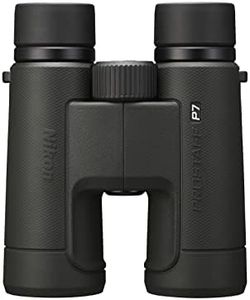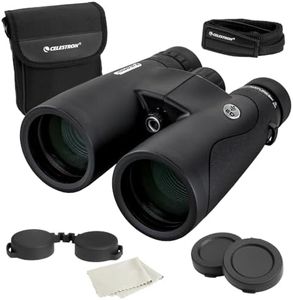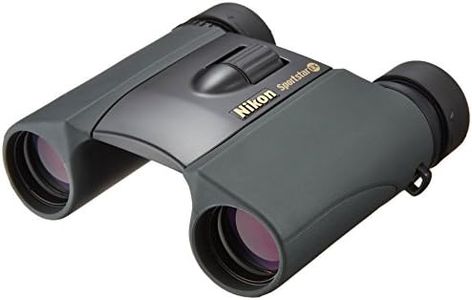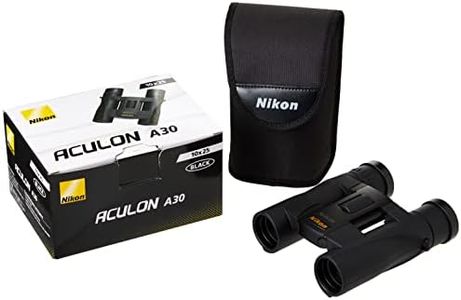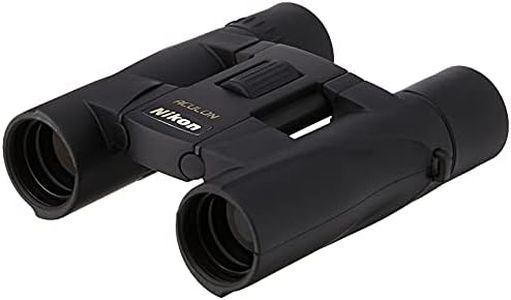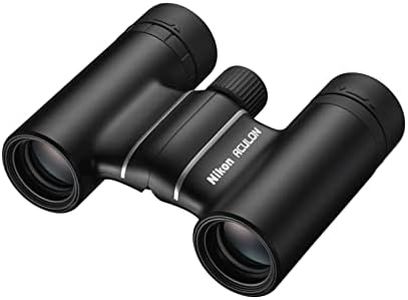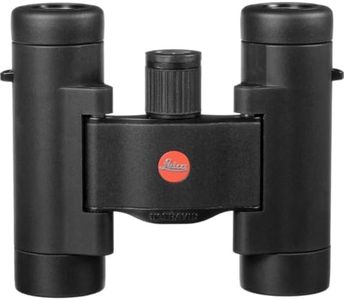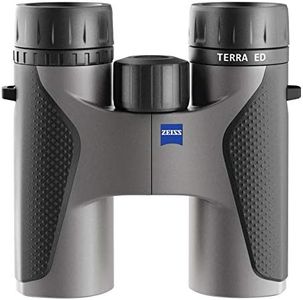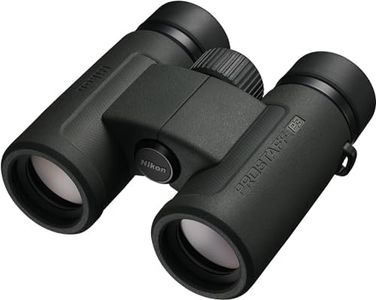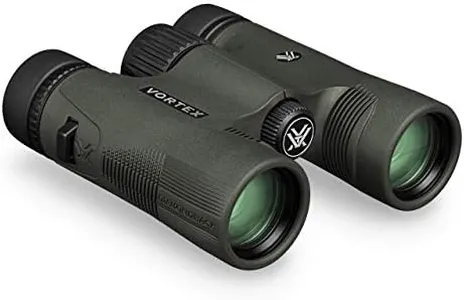We Use CookiesWe use cookies to enhance the security, performance,
functionality and for analytical and promotional activities. By continuing to browse this site you
are agreeing to our privacy policy
10 Best Compact Birding Binoculars
From leading brands and best sellers available on the web.Buying Guide for the Best Compact Birding Binoculars
When choosing compact birding binoculars, it’s important to find a balance between size, ease of use, image clarity, and comfort. Compact models are great for travel and hikes, but you don’t want to sacrifice too much on image quality or brightness, especially if you’ll be birdwatching in varied lighting. Start by thinking about where and how often you’ll use them, as this will help guide your decisions on weight, magnification, and other features.MagnificationMagnification tells you how many times closer objects will appear compared to what you see with the naked eye. For birding, 8x and 10x magnifications are the most common. 8x gives you a wider view, makes it easier to find and follow quick-moving birds, and is less shaky if you have unsteady hands. 10x brings birds in a bit closer but narrows your field of view and can make handshakes more noticeable. Choose 8x if you’re a beginner or want to scan large areas, and 10x if you want to see more detail on distant birds, and you’re comfortable keeping your hands steady.
Objective Lens DiameterThe objective lens diameter, usually listed as the second number (e.g., 8x25 or 10x32), is how wide the front lenses are in millimeters. Larger lenses let in more light and provide a brighter image, which is especially important at dawn, dusk, or in forests. Compact binoculars often have 25mm to 32mm lenses. 25mm models are very light and small, but may be dimmer in low light. 30-32mm strike a good balance between portability and brightness, making them better for mixed conditions. Consider where and when you’ll birdwatch to decide—stick to 25mm for short daytime trips, or 30-32mm if you want better visibility in shade or low light.
Field of ViewField of view describes how wide an area you can see when looking through the binoculars, usually measured in feet at 1,000 yards or meters at 1,000 meters. A wider field of view makes it easier to spot and track birds in flight or moving quickly between branches. Lower magnification models generally have a wider field. If you mostly watch fast or flocking birds, or want to scan open landscapes, prioritize a wider field of view. If you focus on viewing one bird at a time, it may be less crucial.
Close Focus DistanceClose focus distance is the shortest distance at which the binoculars can clearly focus on a subject. For birding, especially if you enjoy observing birds and insects in gardens or forests, a close focus of under 8 feet (about 2.5 meters) is helpful. Choose a model with a shorter close focus if you want to enjoy details on nearby birds or butterflies, but if you mainly watch from a distance, this isn’t as critical.
Weight and SizeWeight and size are crucial for compact binoculars, especially if you plan to carry them for long periods. Lighter and smaller binoculars are more comfortable to wear and pack, but sometimes sacrifice image quality and low-light performance. Try to find a model that feels comfortable in your hands and isn’t too heavy for extended use, especially if you’re hiking or traveling.
Waterproofing and DurabilityWaterproof and fog-proof features protect your binoculars from rain, moisture, and quick changes in temperature, which can otherwise fog the lenses or cause damage. If you’ll use your binoculars outdoors frequently, especially in unpredictable weather or near water, look for these features for longer-lasting and clear performance. Rubber-armored bodies can also help protect against drops and rough handling.
Eyecups and Eye ReliefEyecups are the parts you press against your eyes, and adjustable or twist-up eyecups help you find a comfortable fit, especially if you wear glasses. Eye relief is the distance you can hold the binoculars from your eyes and still see the full field of view. If you wear glasses, choose binoculars with longer eye relief (typically over 15mm) and comfortable, adjustable eyecups.
